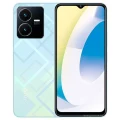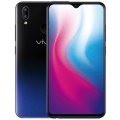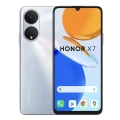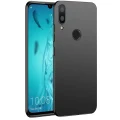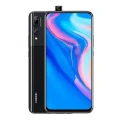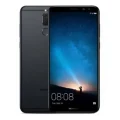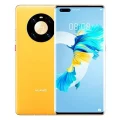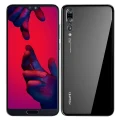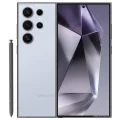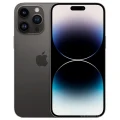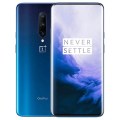Vivo V5
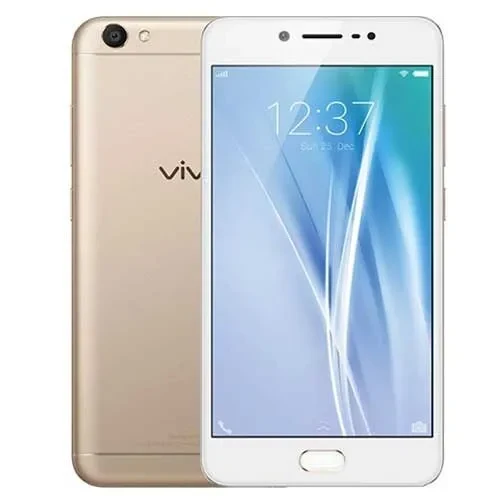


Vivo V5 Price in Bangladesh
The Vivo V5 is priced at 22,190 BDT in Bangladesh. It features a 5.5-inch IPS LCD display and is powered by a 1.5 GHz MediaTek MT6750 Octa-core processor. The device comes with 4 GB of RAM and 32 GB internal storage, expandable up to 256 GB with external storage. The Vivo V5 boasts a 13 MP rear camera and a 20 MP front camera, perfect for selfies. Equipped with a 3000 mAh Li-Ion battery, this stylish device offers solid performance for its price.
Specifications
General
| Model | Vivo V5 |
| Announced | 2016, November |
| Released | 2016, November |
| Status | Available |
Design
| Dimensions | 153.8 x 75.5 x 7.6 mm (6.06 x 2.97 x 0.30 in) |
| Weight | 154 g (5.43 oz) |
| Colors |
Gold, Gray |
Network
| Technology | GSM / HSPA / LTE |
| 2G Network |
GSM 850 / 900 / 1800 / 1900 - SIM 1 & SIM 2 |
| 3G Network |
HSDPA 850 / 900 / 2100 |
| 4G Network |
LTE band 1(2100), 3(1800), 5(850), 40(2300) |
| GPRS <strong>GPRS</strong> (General Packet Radio Service) is a packet oriented mobile data service on the 2G and 3G cellular communication system's global system for mobile communications (GSM), Generally, GPRS is used for the purpose of wireless data transfer, such as sharing pictures and videos or browsing the Internet via a mobile phone connection. | |
| EDGE <strong>EDGE</strong> (Enhanced Data GSM Environment) is a wireless network technology generally considered the next step in the 2G network offers data transfer rates up to four times faster than ordinary GSM networks, Generally, EDGE is used for the purpose of wireless data transfer, such as sharing pictures and videos or browsing the Internet via a mobile phone connection. | |
| Speed | HSPA, LTE |
Display
| Display Type <strong>Display Technology => </strong> A number of display technologies and types used in mobile phones => TFT (Thin Film Transistor), IPS (In-Place Switching), OLED (Organic Light Emitting Diode), AMOLED (Active-Matrix Organic Light-Emitting Diode), Super AMOLED (an even advanced version of AMOLED), Resistive Touchscreen (Resistive touchscreens contain two layer of conductive material with a very small gap between them which acts as a resistance), Capacitive Touchsceen (Capacitive touchscreen technology consists of a layer of glass coated with a transparent conductor) | IPS LCD capacitive touchscreen, 16M colors |
| Size | 5.5 inches, 83.4 cm2 (~71.8% screen-to-body ratio) |
| Resolution | 720 x 1280 pixels, 16:9 ratio (~267 ppi density) |
Camera
Main camera
| Camera Setup | Single |
| Primary <strong>Camera</strong> is able to capture photographs and usually videos, The most important characteristics of a camera are the resolution (measured in megapixels), lens focus type (fixed or automatic), higher megapixel cameras are known to capture higher quality photos, but not always a good measurement of the photos quality. |
13 MP, PDAF |
| Features |
LED flash, panorama, HDR |
| Video | 1080p@30fps |
Selfie camera
| Camera Setup | Single |
| Primary <strong>Camera</strong> is able to capture photographs and usually videos, The most important characteristics of a camera are the resolution (measured in megapixels), lens focus type (fixed or automatic), higher megapixel cameras are known to capture higher quality photos, but not always a good measurement of the photos quality. |
20 MP, f/2.0, 1/2.8" |
Hardware
| Chipset <strong>Chipset</strong> is a group of integrated circuits designed to perform one or a more dedicated functions, often with real time computing constraints, Popular smartphones are equipped with more advanced embedded chipsets that can do many different tasks depending on their programming. | Mediatek MT6750 (28 nm) |
| CPU <strong>CPU</strong> (Central Processing Unit) mostly known as processors, CPU processes instructions in order to carry out certain functions that make your device operate properly. Processors are often described as the brain of computers, smartphones and tablets, Smartphones and tablets rely on processors to carry out their every task, Processors are an incredibly important factor in selecting any type of computing device, including your smartphone. | Octa-core (4x1.5 GHz Cortex-A53 & 4x1.0 GHz Cortex-A53) |
| GPU <strong>GPU</strong> (Graphics Processing Unit) is a single-chip processor designed to rapidly manipulate and alter memory to accelerate the creation of images in a frame buffer intended for output to a display, This includes things such as lighting effects, object transformations, and 3D motion. | Mali-T86 MP2 |
| RAM (Memory) <strong>RAM</strong> (Random Access Memory) is a type of computer memory that can be accessed randomly, any byte of memory can be accessed without touching the preceding bytes that allows information to be stored and accessed quickly from random locations. RAM is the most common type of memory found in computer systems, smartphones, tablets and other electronic devices. | 4 GB RAM |
| Internal Storage <strong>Internal Storage</strong> is a data storage space (flash memory) mostly used in smartphones, tablets and other electronic devices where operating system, apps, music, photos, videos, files and other user data Is stored. | 32 GB |
| Sensors <strong>Sensors</strong> are electronic components that detects and responds to some type of input from the physical environment. The specific input could be light, heat, motion, moisture, pressure and location, The output is generally a signal that is converted to use in computing systems, a location sensor, such as a GPS receiver is able to detect current location of your electronic device. |
Fingerprint (front-mounted), accelerometer, proximity, compass |
Connectivity
| Bluetooth <strong>Bluetooth</strong> is a wireless communications technology for exchanging data between mobile phones, headsets, computers and other network devices over short distances without wires, Bluetooth technology was primarily designed to support simple wireless networking of personal consumer devices. | 4.0, A2DP |
| Infrared <strong>Infrared</strong> connectivity is an old wireless technology used to connect two electronic devices. It uses a beam of infrared light to transmit information and so requires direct line of sight and operates only at close range. | |
| USB | microUSB 2.0, USB On-The-Go |
| GPS <strong>GPS</strong> The Global Positioning System is a satellite-based radio navigation system, GPS permits users to determine their position, velocity and the time 24 hours a day, in all weather, anywhere in the world, In order to locate your position, your device or GPS receiver must have a clear view of the sky. | Yes, with A-GPS |
| NFC <strong>NFC</strong> (Near field communication) is a set of standards for smartphones and similar devices to establish peer-to-peer radio communications with each other by touching them together or bringing them into proximity, usually no more than a few inches. |
Battery
| Battery Type <strong>Battery Type => </strong> Cell phones run on various kinds of batteries depending on the manufacturer, phone size or shape and features. There are basically four types of cell phone batteries => Lithium Polymer, Lithium Ion, Nickel Metal Hydride and Nickel Cadmium. | Non-Removable |
| Capacity <strong>Battery Capacity</strong> is a measure (typically in Amp-hr) of the charge stored by the battery, and is determined by the mass of active material contained in the battery. The battery capacity represents the maximum amount of energy that can be extracted from the battery under certain conditions. | 3000 mAh battery |
Vivo V5 Review: A Selfie Lover’s Dream or Just Another Mid-Range Smartphone?
Looking for a smartphone that combines sleek design, reliable performance, and a camera fit for your Instagram-worthy selfies? Enter the Vivo V5, a mid-range smartphone that’s making waves, especially among mobile photography enthusiasts. With its standout 20 MP front camera, this device prides itself on catering to selfie lovers without compromising on overall functionality.
If you’re considering the Vivo V5 or just a gadget enthusiast on the hunt for your next phone, this review will give you a complete breakdown of its features, performance, and how it stands up against the competition.
Design and Build Quality
A Sleek Yet Sturdy Build
The Vivo V5 starts off strong with its premium-looking design. At first glance, the phone feels inspired by higher-end models with its metallic finish and curved edges. The 5.5-inch IPS LCD display features 720 x 1280 pixels of resolution, making videos and everyday scrolling satisfying. Though it doesn’t match the razor-sharp displays of flagships, for its price point of 22,190 BDT in Bangladesh, it delivers adequately in terms of brightness and color clarity.
Ergonomically, the Vivo V5 is comfortable to hold. Despite its 3000 mAh battery, it maintains a lightweight, slim profile, which is a plus for users who are always on the go. Bonus points go to its sturdy build, which feels durable enough for everyday use.
Pros:
- Premium metallic finish
- Comfortable grip and lightweight
- 2.5D curved glass for a modern aesthetic
Cons:
- The HD display feels a bit outdated compared to FHD alternatives in the same price range
Camera Performance
The Selfie Expert
This is where the Vivo V5 truly shines. Vivo markets the device as a “selfie expert,” and the 20 MP front camera lives up to the hype. Equipped with a Sony IMX376 sensor, it captures impressive detail and color accuracy—even in low light, thanks to its soft “moonlight glow” flash. Whether you’re snapping selfies or jumping on a video call, this one’s a crowd-pleaser.
On the back, the 13 MP rear camera offers decent performance but lacks the wow factor compared to its front-facing counterpart. Images are clear and bright under good lighting conditions, but low-light shots can be grainy.
Notable Features:
- 20 MP Front Camera with softlight flash for clear, vibrant selfies
- Real-time beautification modes for quick touch-ups
- HDR support for enhanced rear-camera photography
If selfies are your top priority, the Vivo V5 is your match made in heaven. If you’re more interested in professional rear-camera photography, however, there might be better options.
User Experience and Performance
Hardware and Software Performance
Under the hood, the Vivo V5 is powered by a 1.5 GHz MediaTek MT6750 octa-core processor, 4 GB of RAM, and 32 GB internal storage (expandable up to 256 GB via microSD). While it won’t dethrone high-performance devices, it handles everyday tasks like browsing, messaging, and light gaming with ease. Apps load quickly, and multitasking feels smooth without noticeable lags.
On the software side, the device runs on Funtouch OS 2.6 on Android 6.0 Marshmallow. Vivo’s custom skin is vibrant and user-friendly, though it can feel overwhelming for users accustomed to a cleaner Android experience.
Meanwhile, the 3000 mAh battery holds its own. On average use, you can expect a full day of battery life, and the quick charge feature is a lifesaver when you’re pressed for time.
Performance Highlights:
- Solid multitasking with 4 GB RAM
- Storage expandable up to 256 GB
- All-day battery life (with quick charging)
Room for Improvement:
- Funtouch OS offers limited customization
- Not ideal for heavy, graphics-intensive gaming
Comparison with Competitors
Looking at the competition, the Vivo V5 holds its ground but faces some strong contenders. Here are some noteworthy comparisons:
- Xiaomi Redmi Note 9 Pro:
At a slightly higher price point, the Redmi Note 9 Pro boasts a Full HD display, better battery life (5020 mAh), and a superior rear camera setup. However, its front camera doesn’t match the Vivo V5’s selfie capabilities.
- Oppo F1s:
Known as another selfie-focused device, the Oppo F1s offers similar features, including a high-resolution front camera (16 MP). Although its performance is neck and neck with the Vivo V5, Vivo edges ahead with its 20 MP front shooter.
- Samsung Galaxy J7 Prime:
The J7 Prime offers a robust build and excellent brand reliability but falls behind in front-camera resolution and customization features compared to the Vivo V5.
While competitors might outperform the Vivo V5 in certain areas like all-around performance or battery capacity, if mobile photography and selfies are your priority, Vivo V5 remains one of the best options in its segment.
Is the Vivo V5 Worth It?
The Vivo V5 delivers an excellent balance of style, performance, and price. With its 20 MP front camera, 4 GB RAM, and 3000 mAh battery, it caters perfectly to young smartphone users and selfie enthusiasts who want a reliable, stylish device without spending a fortune.
Sure, it doesn’t have cutting-edge specs to rival premium smartphones. But at 22,190 BDT, it promises plenty of value for users who prioritize photography and social media.
Should you buy the Vivo V5?
If you’re someone who loves snapping selfies and wants a stylish, handy device that gets the job done, the Vivo V5 is definitely worth considering. On the flip side, if you’re looking for a better display resolution or rear-camera quality, it might be worth exploring alternatives like the Redmi Note 9 Pro or Oppo F1s.
What are your thoughts on the Vivo V5? Have you tried it out, or is it on your wishlist? Share your experiences in the comments below—because at the end of the day, the best device is the one that fits your needs perfectly.

